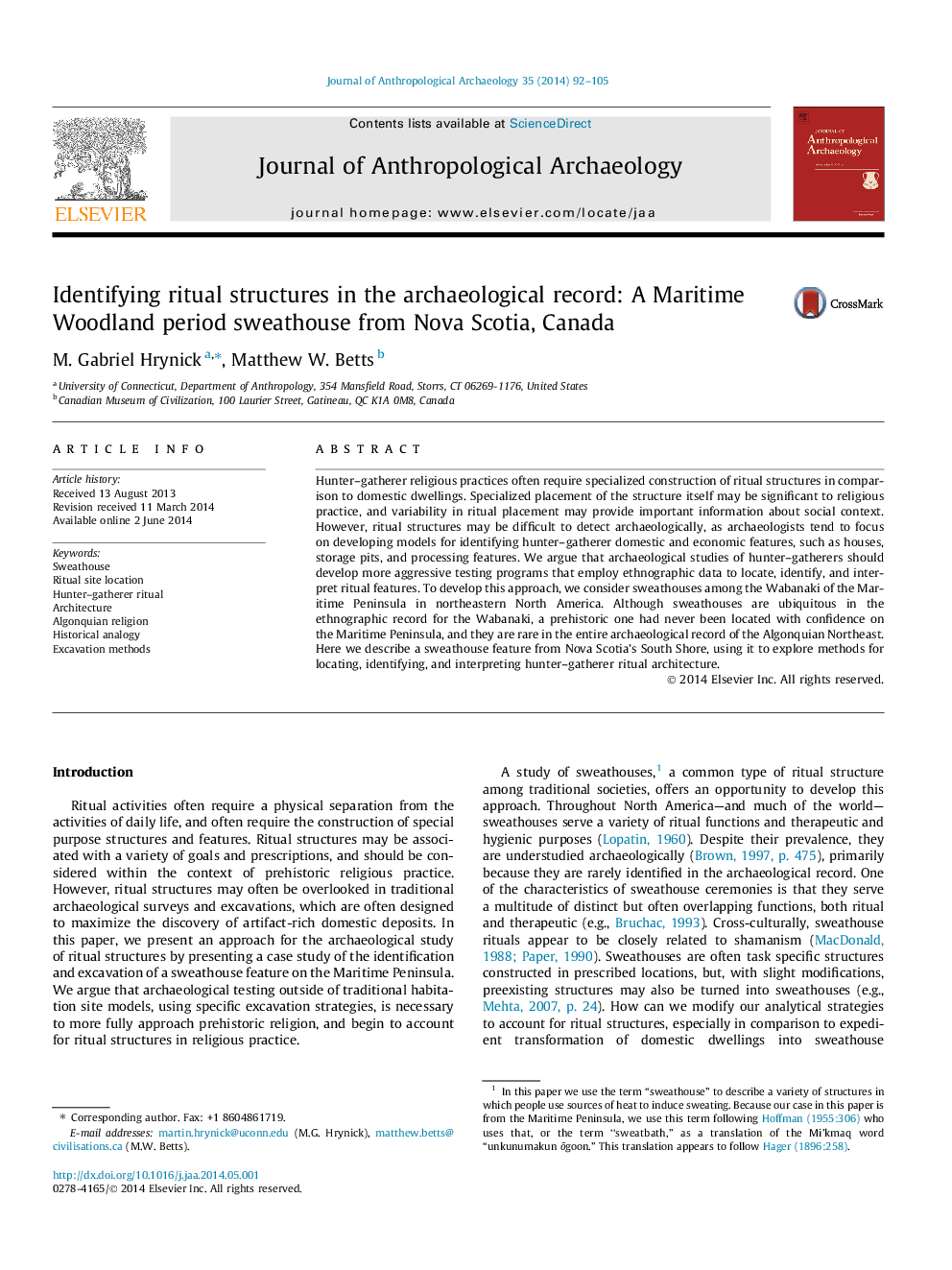| کد مقاله | کد نشریه | سال انتشار | مقاله انگلیسی | نسخه تمام متن |
|---|---|---|---|---|
| 1034958 | 1483855 | 2014 | 14 صفحه PDF | دانلود رایگان |
• Identifying ritual structures and their placement requires methodological refinement.
• Ritual placement of structures is important in hunter–gatherer religion and social context.
• We describe the first prehistoric sweathouse identified on the Maritime Peninsula.
• Their previous archaeological absence may reflect difficulty identifying ritual placement.
• Conventional site models must be adjusted to identify ritual placement.
Hunter–gatherer religious practices often require specialized construction of ritual structures in comparison to domestic dwellings. Specialized placement of the structure itself may be significant to religious practice, and variability in ritual placement may provide important information about social context. However, ritual structures may be difficult to detect archaeologically, as archaeologists tend to focus on developing models for identifying hunter–gatherer domestic and economic features, such as houses, storage pits, and processing features. We argue that archaeological studies of hunter–gatherers should develop more aggressive testing programs that employ ethnographic data to locate, identify, and interpret ritual features. To develop this approach, we consider sweathouses among the Wabanaki of the Maritime Peninsula in northeastern North America. Although sweathouses are ubiquitous in the ethnographic record for the Wabanaki, a prehistoric one had never been located with confidence on the Maritime Peninsula, and they are rare in the entire archaeological record of the Algonquian Northeast. Here we describe a sweathouse feature from Nova Scotia’s South Shore, using it to explore methods for locating, identifying, and interpreting hunter–gatherer ritual architecture.
Journal: Journal of Anthropological Archaeology - Volume 35, September 2014, Pages 92–105
